Buying a road bike? Here's how to choose the right one for you
Buying a road bike can be riddled with jargon and confusion, so here we will unpick everything you need to know to choose a road bike perfectly suited to your riding requirements
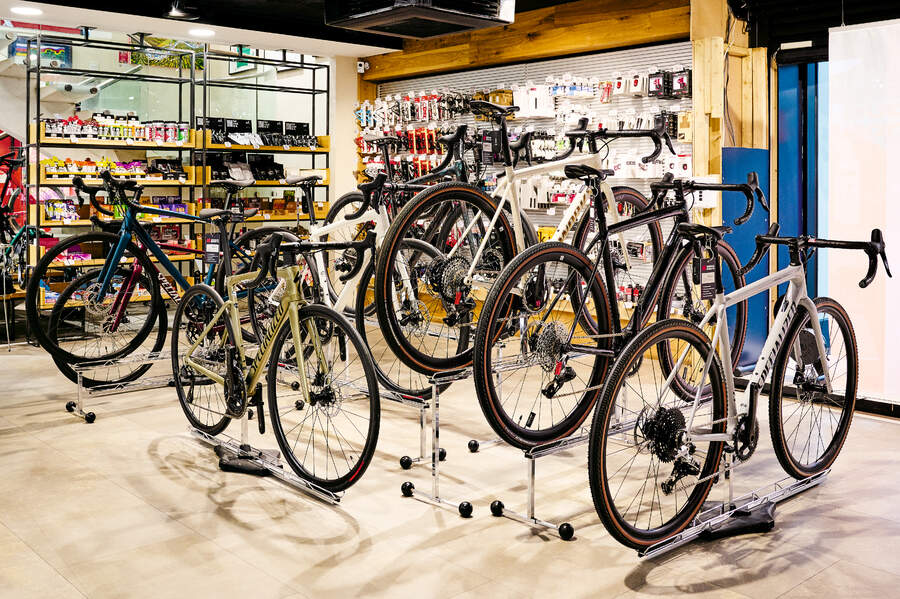
When it comes to buying a road bike, the process can be daunting to even the most experienced cyclists. While a new road bike is undoubtedly an exciting purchase to make, the endless lists of jargon and technical terminology can quickly leave you tongue-tied, and the abundance of different bikes to choose from can leave you drowning in decisions to make. But don't worry, we've all been there.
As the associate editor here at Cyclingnews, I've overseen the creation of hundreds of bike-related buyer's guides over the past five years. Prior to this, I spent five years working in a local bike shop helping people from all walks of life choose the right bike for their needs. With that experience and some help from my colleagues and industry experts, I've put together this guide to buying a road bike, to help you choose the best road bike for you and guide you through the process from start to finish.
Since the definition of a road bike can be so broad and varied, what constitutes the best for you will depend on many factors personal to each reader.
For example, take the Specialized Tarmac. It's a great example of a road bike, it's won countless bike races at every level, and it's lauded by many - myself included - but if you're looking to commute 10 miles each way during winter, it's not the right one for you as it can't take mudguards. Equally, the Trek Domane is incredibly capable over rough ground, it can accept mudguards for the commute, and has also won races at the top of our sport, but if your aim is racing hill climbs or criteriums, then others would perform better.
I will therefore use this guide to explain what types of road bike exist, and explain what factors we look at when judging a bike's quality and suitability in the first place. When I'm done, you will know what your options are and have the tools to compare the merits and pitfalls of each, so that you will be comfortably buying a road bike in no time.
So without further ado, let's get you a new bike.
Types of road bike
The first step to understanding which road bike you need, is to ascertain what types of road bike actually exist, and perhaps more importantly, what differentiates them from each other in their purpose. Bikes are predominantly unisex by design, but a few brands do make bikes specifically for women. The model hierarchy of these brands will usually mimic the unisex approach outlined below, but the best women's road bikes will include subtle differences tailoring the frame and its components to the requirements of female riders.

Broadly speaking, road bikes fall into two branches: race and endurance, both of which have subcategories which I'll dive into momentarily.
Race bikes are usually more 'aggressive' in their geometry. This means that the frame is slightly longer and the handlebars are lower, putting your body in a more forward-leaning - and aerodynamic - position. This will help you to go faster, as it cuts down on wind resistance, but may be uncomfortable for a new rider, as there's extra pressure on the hands, neck and shoulders.
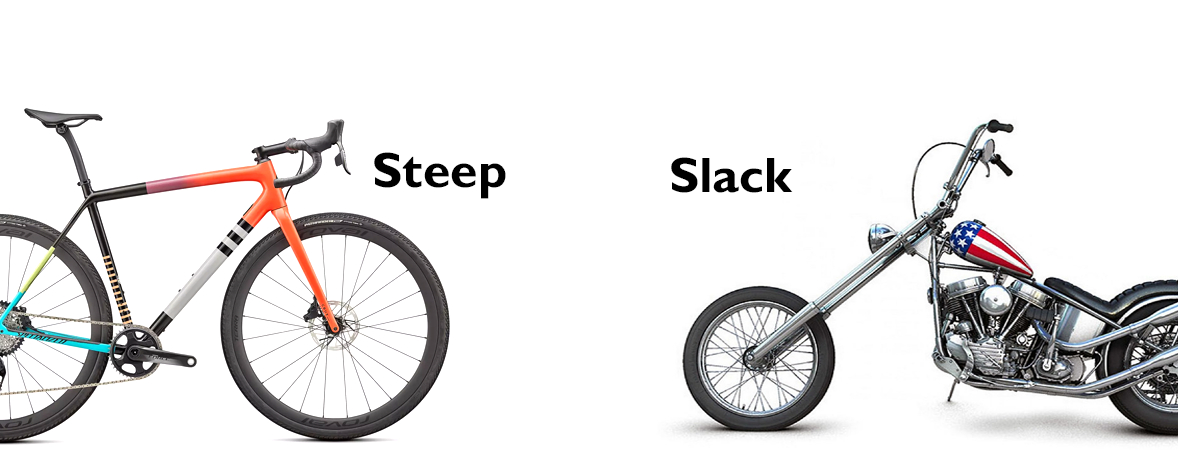
Endurance bikes, meanwhile, will be slightly taller at the front, usually with a shorter reach to promote a more upright position that is more comfortable to hold for longer durations, enabling you to ride longer distances. They also have a longer wheelbase (the distance between the front and rear wheel) with slacker steering angles (a Harley Davidson motorbike has a very slack steering angle), which helps to inspire stability and handling confidence.
The best budget road bikes typically have endurance geometry.
From here, as your budget increases, so too does the specificity of the bike's design, and this is where race and endurance bikes diverge again into sub-niches.
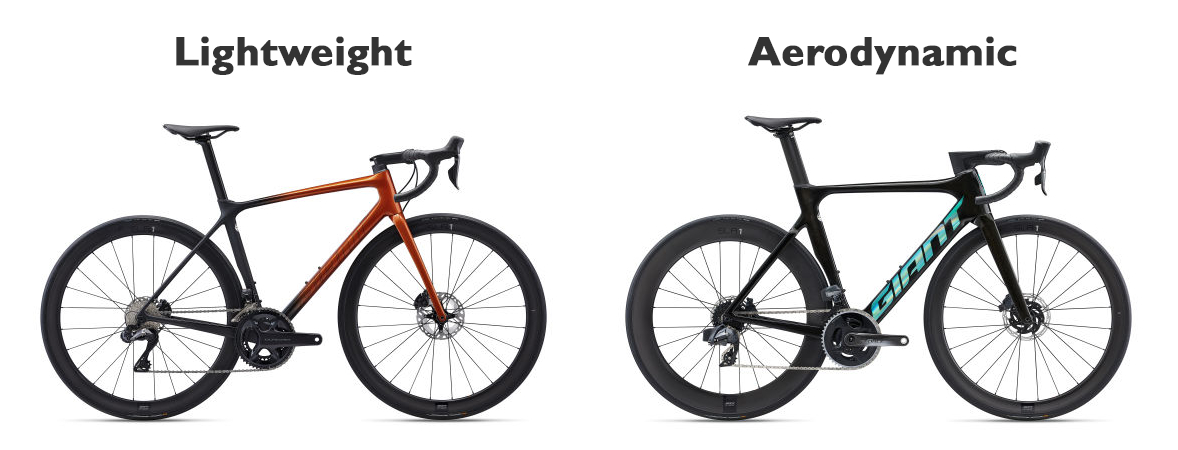
Race bikes can be split into two categories: lightweight and aero. The best lightweight bikes will focus on weight; they'll use shallow wheels, smaller frame tubes and minimal added features in a bid to keep the weight down. The best aero bikes will focus on cutting through the wind, usually with deeper wheels and deeper section frame tubes with aerodynamic profiles.
Within this race category, it's increasingly common for brands to merge the two into single bikes designed to blend an optimum balance of both. Examples are the Specialized Tarmac and the Generation 8 Trek Madone. You'll still find brands that have separate lightweight and aero models though, such as the Merida Scultura and Reacto and the Giant TCR and Propel.
The best endurance bikes category is slightly different in how it splits. Rather than diverging into sub-niches, endurance bikes remain in a category of their own - often described as sportive or fondo bikes - with concessions to extra comfort such as bigger tyres, compliance-boosting elastomers, leaf-spring frame designs or literal suspension systems built in.
Meanwhile, additional derivatives of 'endurance' have cropped up to cater to people's differing riding preferences. I'm talking primarily about the recent upsurge of 'all-road' bikes, which include even bigger tyres and different gear ratios. All-road bikes bridge the gap between endurance road and gravel bikes, allowing riders to head off the tarmac onto gravel terrain. They are, however, best suited to 'light' gravel, rather than super bumpy singletrack.
There's also the additional category of electric. The best electric road bikes primarily replicate the geometry of endurance bikes to aid comfort, but with an integrated battery and motor to assist with the pedalling requirement.
In buying a road bike and choosing the right one for you, you'll need to consider the type of riding you're planning on doing. If you prioritise your racing performance above anything else, then a lightweight or aero race bike is likely going to be the right choice. However, if you're conscious of your on-bike comfort and plan to ride longer distances, then endurance bikes will be your go-to. If you think you'd like to be able to continue when the pavement ends, then an all-road bike will be best.
If you're brand new to this and you have no idea of what sort of riding you'll do - or what you're interested in trying - then try to focus on versatility. Rest assured, a race bike can still cover long distances and an endurance bike can still race, so don't feel overwhelmed that you'll make the wrong choice, because there really isn't such a thing.
What size bike do I need?
The next step of buying a road bike is making sure that whatever you buy, you get it in the correct size. This can be as simple or as in-depth as you choose to take it, but it is possible to make the wrong choice here, so be sure to follow our advice.

Simply, all bike brands will have a size chart for their bikes. This will be pretty basic, but perfectly functional for the majority of riders. It will break down the various sizes available into brackets based on your overall height (and sometimes leg length) so you can easily see which is most suitable for you. Put even more plainly, it will tell you that if you are X centimetres tall, then Y will be the correct size for you.
It's mainly at the margin between bike sizes or for riders with atypical body dimensions that the choice may be trickier and where you might want to seek advice from a local bike shop.
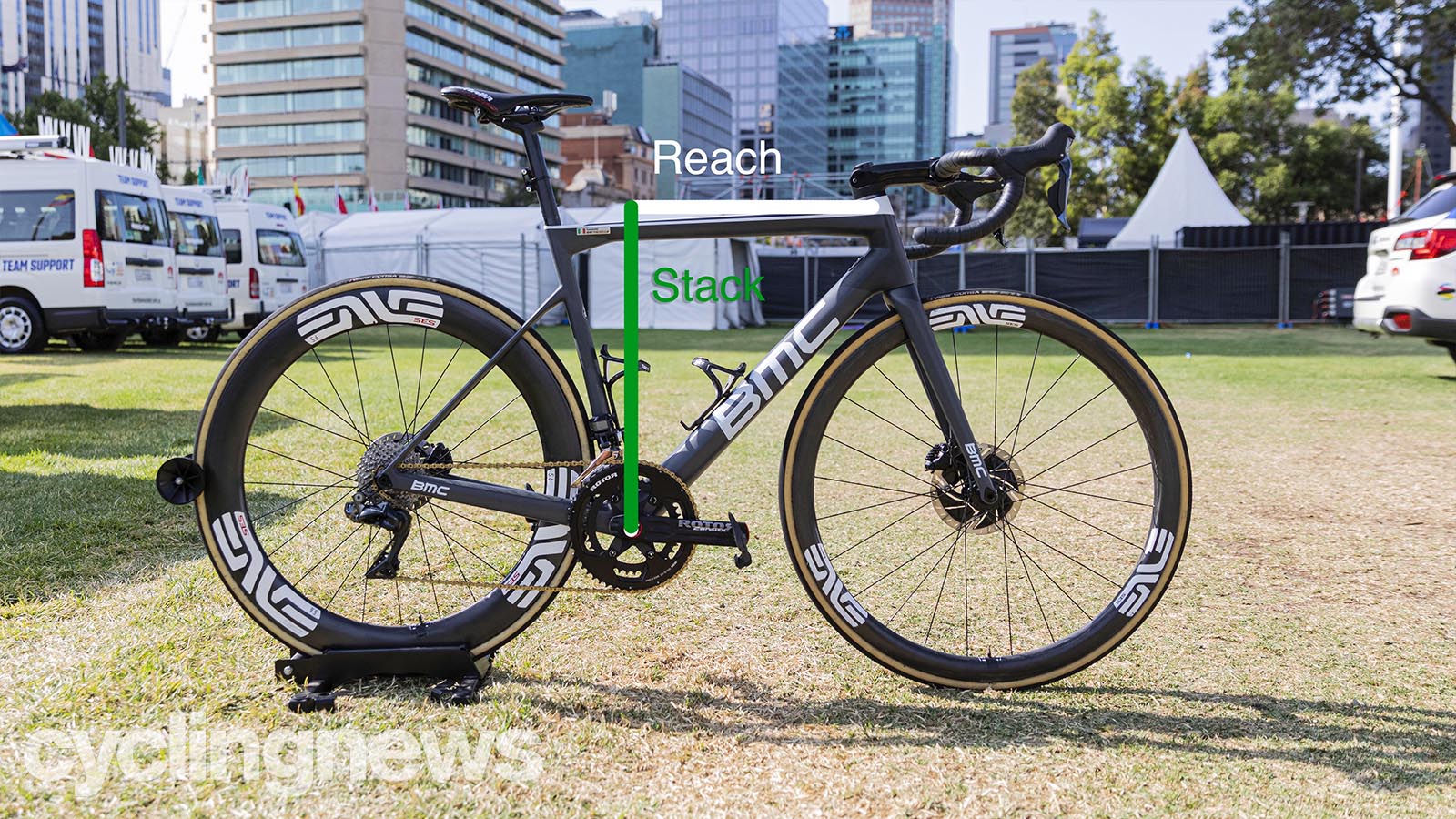
Taking it a little further, bike brands will in most cases also supply a geometry chart that outlines the lengths of the bike's tubes and key sizing metrics like the stack and reach of the bike. Read our detailed explainer for more information, handily titled "What size bike do I need?" as well as our separate explainer to bike fit, where you'll learn how you can adjust and tailor a bike's components to your specific fit requirements. There's a lot that you can change relatively cheaply on a bike, including stem length, handlebar width, seatpost length and saddle position to get a better fit.
There are also tools on the internet that allow you to compare the geometry of two separate bikes; my favourite of these is Geometry Geeks.
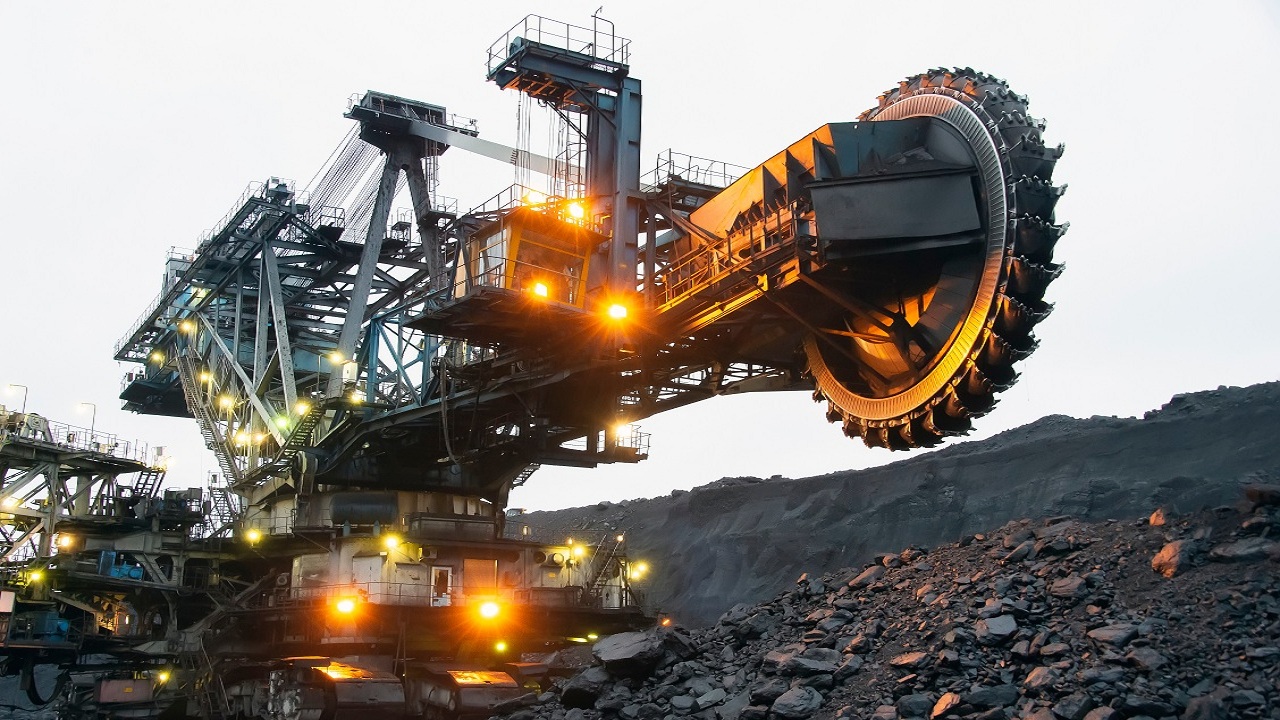
What material bike is best?
At a glance, road bike frames are made from either steel, aluminium, carbon fibre, or titanium, while a very niche few are made from magnesium.
Steel is the OG in bike frame manufacturing and was prevalent throughout most of the 20th century but, nowadays, the majority of bikes are made from either aluminium or carbon fibre. Aluminium tends to be the more budget option, while carbon fibre is almost ubiquitous where high performance is the goal since it can be profiled into aerodynamic shapes whilst also being exceptionally lightweight.
There are different grades of carbon fibre used in bike frames, with different costs. In general, a higher-performance, lighter, more expensive bike is likely to use high-modulus carbon fibre, whereas a lower-priced bike will use cheaper carbon fibre grades and the frame will be a little heavier.
Both steel and titanium are preferred by independent frame builders and are revered for their vibration-absorption properties and the damped ride quality they can provide. Steel is usually the heavier of the two, but the lighter-weight titanium is more expensive. Titanium has the advantage that it doesn't corrode, so titanium frames are usually unpainted. Steel frames are usually painted and higher quality ones will be treated to prevent rust.
Relating this back to your current endeavour of buying a road bike suited to you, the material you choose will most likely be a factor of budget versus preference. If you're after something modern from a mainstream brand, then you're probably going to be deciding between alloy and carbon.
Don't get sucked into buying cheap carbon fibre for the sake of having a carbon fibre bike though. A well-built alloy bike can still be better and lower in weight than a cheap carbon frame, especially if the carbon bike gets paired with lower quality components to remain within a budget constraint.
If you're looking for a bike that can handle the rigours of long-distance touring or a lifetime of abuse, then steel and titanium are going to be of interest, but don't expect steel to be lightweight and don't expect titanium to come cheap.
For some interesting background on each material and the environmental impact they incur, read our deep dive on how bicycles are made.
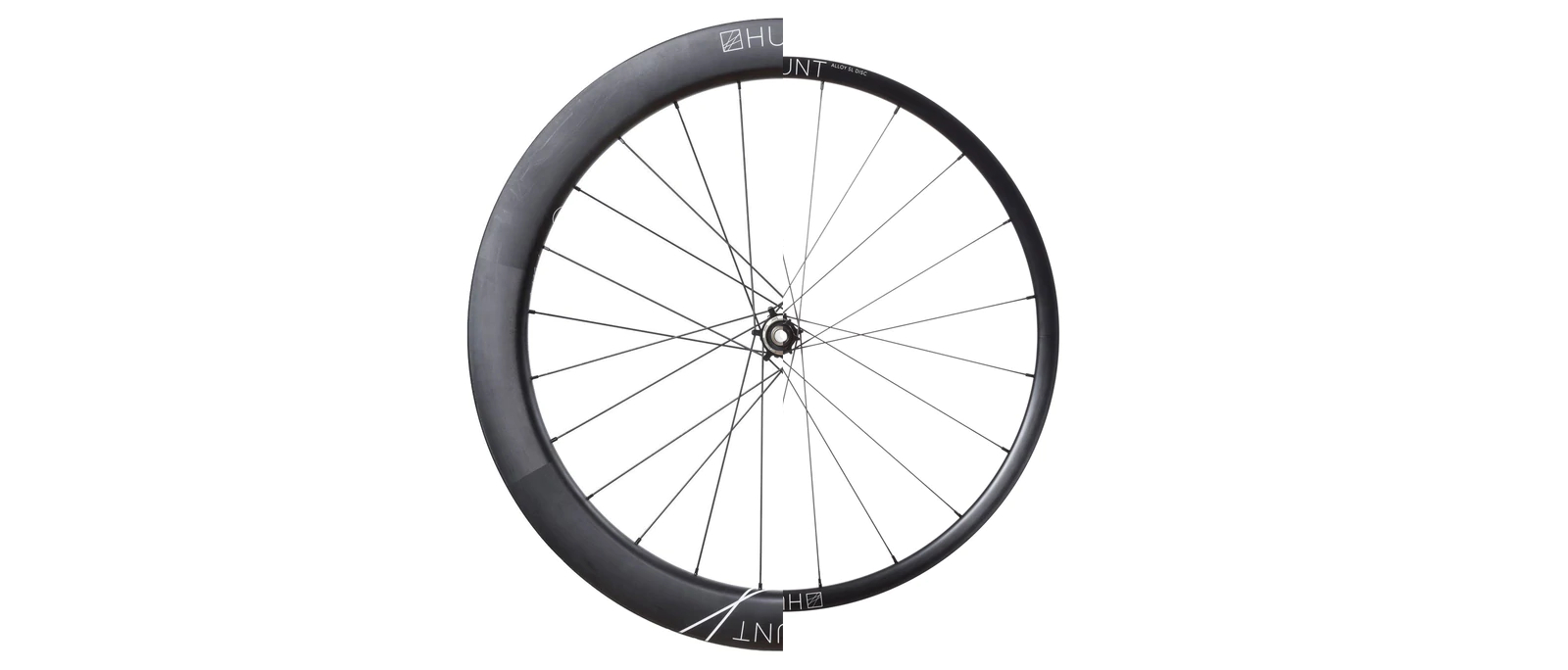
Which material should my road bike wheels be?
Alloy or carbon fibre?
Unless you're consciously buying a frameset only, any road bike you buy will come with wheels fitted, so you won't necessarily have a free choice of which wheels to buy (unless you're custom building a bike, of course) but given the wheels will be an important part of the bike you buy, it's important to be aware of what is available.
Like frames, wheels come in a choice of either aluminium or carbon, and once again, the primary differentiator is cost. A pair of wheels starts at around £150/$200, and the prices rise well into four figures with the premium end of the best road bike wheels fetching upwards of £3,000/$4,000. There are very good wheels that are much less expensive than this, though, so don't think you'll have to pay this much.
High-end wheels are always made from carbon fibre. They come in various depths, with deeper wheels tending to be faster (more aerodynamic) while the best lightweight wheels are shallow. A good all-round depth for carbon wheels is between 40mm and 50mm; wheels deeper than this can be difficult to handle in stronger, gusty crosswinds.
Budget wheels are almost always made from aluminium, and given this material is heavier, they are most commonly shallow in a bid to keep the weight down.
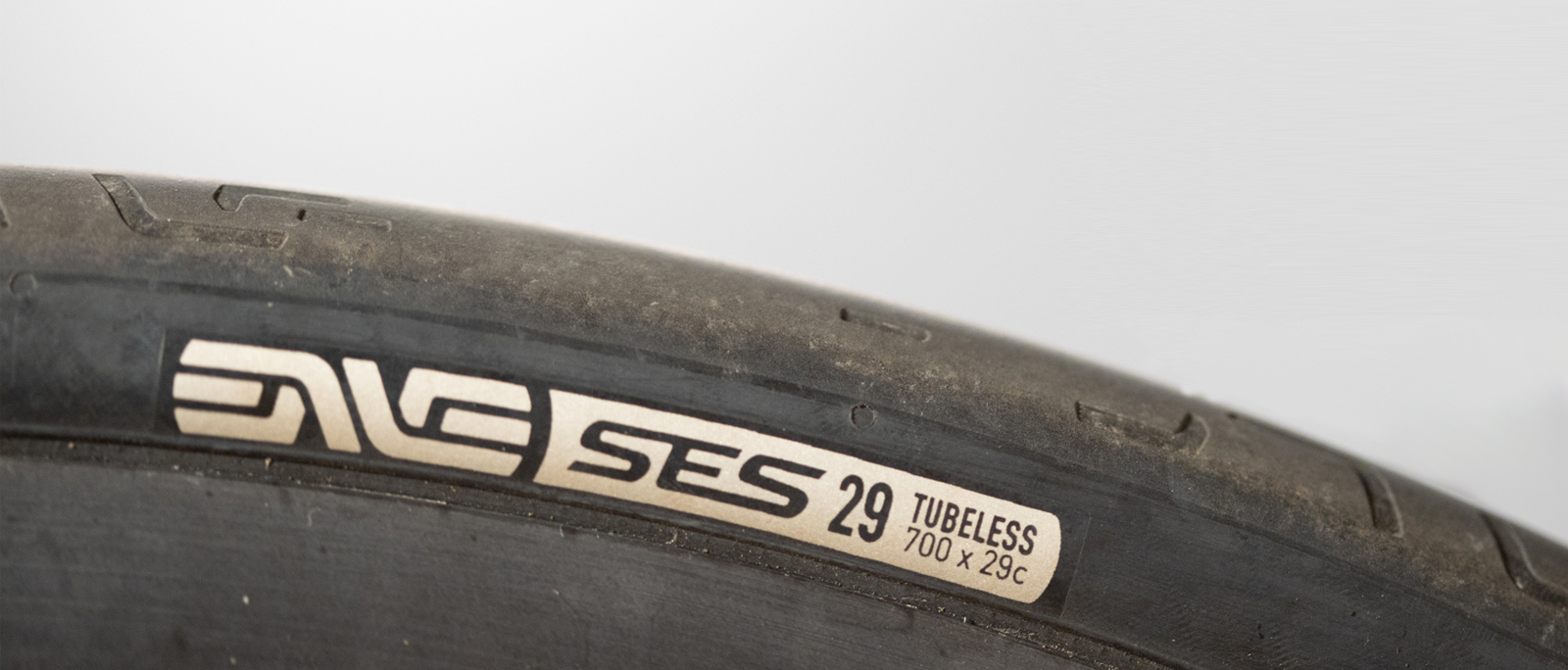
How wide should my tyres be?
Connected to wheels, quite literally, are the tyres. These are easily (and relatively cheaply) swapped but it's worth knowing what to look out for. This is especially true with regards to tyre size, since the maximum available tyre size will be dictated by the clearance of the frame.
Put differently, it's good to know what tyres your bike will come with, but quoted tyre clearance will dictate the maximum tyre size you can fit to your wheels.
On road bikes, the most commonly fitted tyre widths are 25c or 28c. If you're planning on riding longer distances, a 28c tyre would be considered a better option for a bit of increased comfort. If you're planning to ride on light gravel as an all-road bike is intended, 30c or even wider would be advised. If the quoted tyre clearance is lower than the tyres you wish to use, you'll have trouble and could damage the frame.
Bikes with rim brakes are usually limited to around 28mm tyres since the brake caliper is so narrow. Meanwhile, bikes with disc brakes can be given much wider clearances.
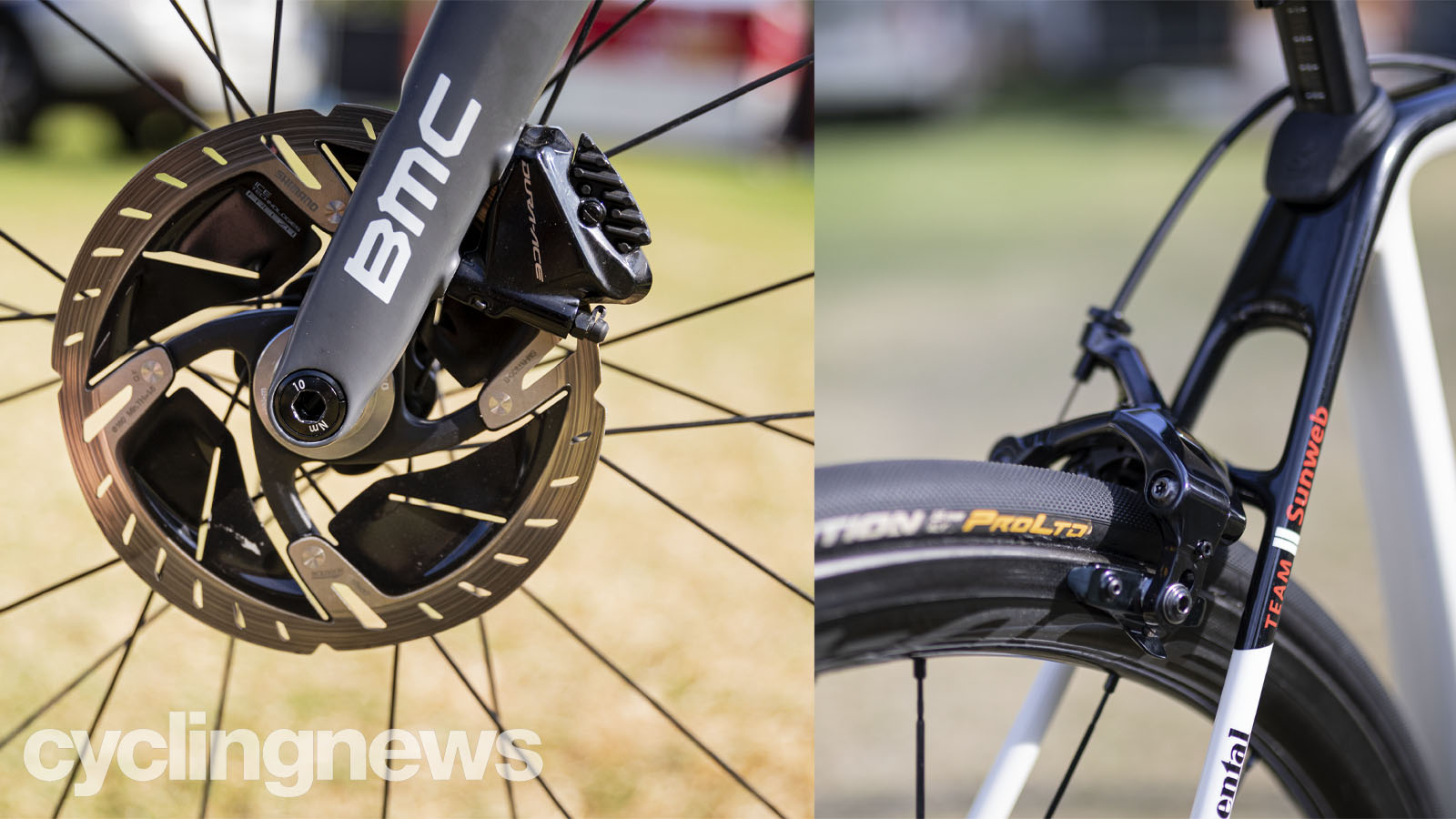
Rim brakes or disc brakes?
In a nutshell, a rim brake is a system in which the brake caliper surrounds the tyre and clamps onto a braking surface either side of the wheel's rim. A disc brake, meanwhile, uses a disc brake rotor attached to the hub of the wheel, and a caliper fixed to the fork leg or chainstay which clamps onto the rotor.
Rim brakes are usually a little lighter than their disc-brake counterparts, but discs possess better performance, especially in the wet. Disc brakes also require less maintenance on account of their (usually) hydraulic actuation, rather than cables which can stretch and bung up with grime over time. However, when it does come time to service, rim brakes are usually the more straightforward of the two.
Cable-actuated disc brakes are also available, and while these do boast better performance than rim brakes, they require more maintenance and upkeep, and they suffer from the same cable stretch. In our opinion, the small difference in price to upgrade to a hydraulic system is worth it.
Disc brakes are a fairly recent addition to road bikes, but they are almost universally preferred for new bikes and the trend is very quickly heading towards disc brakes, meaning servicing and spares will be easier to find.
Read our in-depth rim brakes vs disc brakes guide for a detailed comparison of the two.
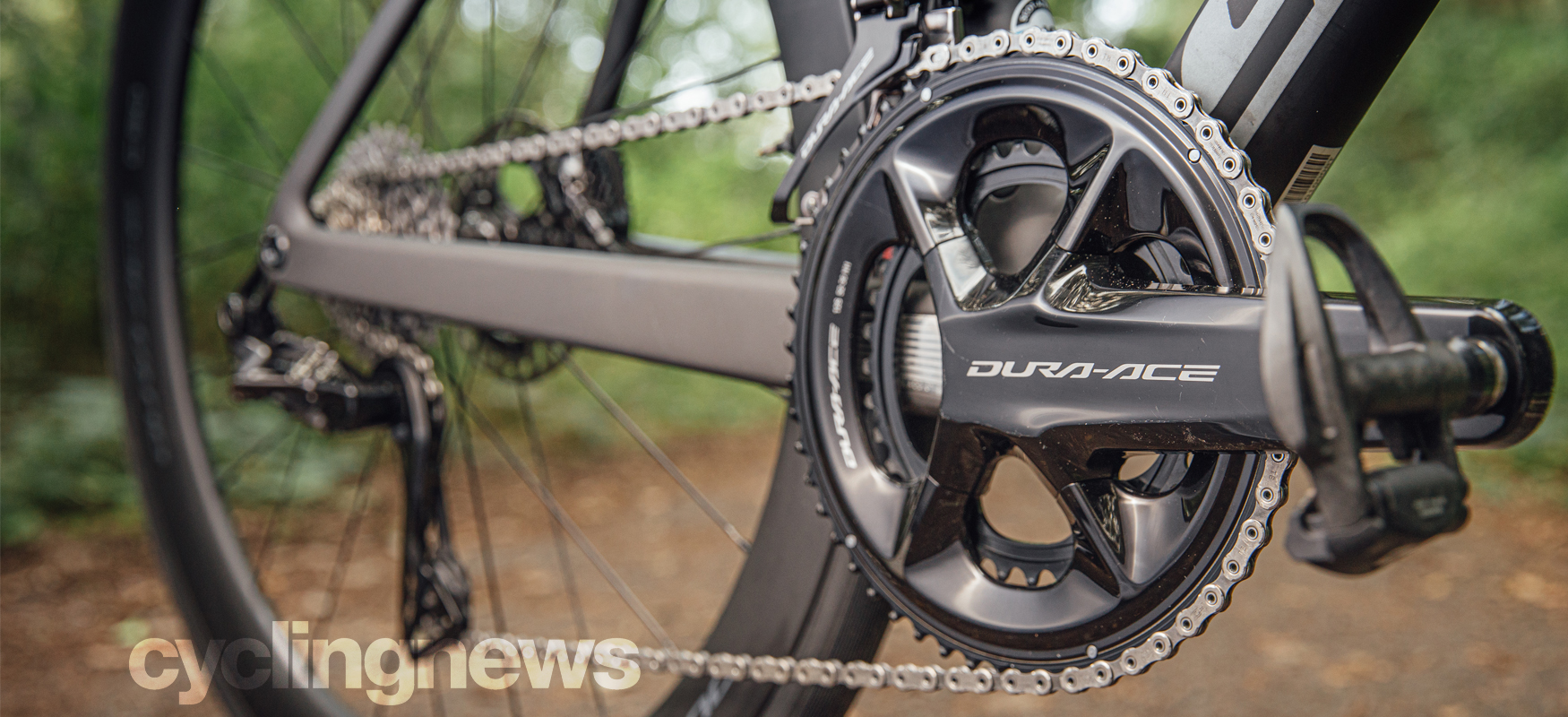
What is a groupset?
When choosing your brakes on a road bike, you're also indirectly making a decision about your gears, for it is the combination of those two sets of components that makes up your groupset. The reason the two are so intertwined is that the gear shifters and brake levers are built into one component, and it's not advised to pair shift/brake levers from one brand with derailleurs or brakes from another.
The three major road bike groupset manufacturers are Shimano, SRAM and Campagnolo, although FSA and Rotor have options, too. You may find Microshift components on cheaper road bikes. Our rundown of road bike groupsets explains all the different options for road cyclists, from the budget options right up to the top-of-the-pile wireless electronic systems.
The number of cogs in the cassette attached to the rear wheels determines the bike's quoted speeds. Top tier groupsets now offer 12 speeds while lower priced options reduce the number of speeds to between 7 and 11.
Gear ratios
A groupset will be sold with a variety of different spreads of gearing. Endurance bikes are typically equipped with a "compact" crankset with a 50/34-tooth chainring pair, while race bikes will have larger chainrings.
The combination of the chainrings and the cassette attached to the rear wheel determine your available gear ratios, while the number of cogs in the cassette will determine the size of the jumps between them. Most modern bikes have much wider gear spreads than those sold a few years ago.
To make climbing hills easier, look for gearing that goes to 1:1, where the number of teeth in the small chainring and those in the largest rear gear is the same, for example 34x34 teeth. You may find bikes equipped with gears that go below this, with more teeth in the rear than in the chainring, which will make climbing easier still.
Electrical or mechanical gears?
On the gears side of groupsets, the choice you'll be met with is mechanical or electrical. Electronic groupsets are almost certainly better but you do need to remember to charge them, and they cost more. The decision will primarily come down to budget but if you're planning on touring in the desert without a source of power, then mechanical will probably be better.
What should you expect for your money?
As with anything, the more you spend, the better bike you're likely to get. Often this means lighter and more aerodynamic components, with better brakes and faster shifting, but it's worth stating that the different types of road bike are diverse enough that even if you spent all the money in the world, you still wouldn't be able to get one bike that does all things better than the rest. You'd still need to decide whether to chase aerodynamics, weight, compliance and more.
It's also worth adding that the price will often be lower for direct-to-consumer bike brands such as Ribble or Canyon, or in-house brands such as BTwin or Van Rysel (Decathlon), Boardman (Halfords) or Coop Cycles (REI).
However, if you're new to buying bikes, how do you avoid being taken for a ride? If you're spending £1,000, what can you expect to get for your money? Should you reasonably expect to get carbon fibre wheels with a bike that costs $2,000? Is that bike shop rightly charging €5,000 for a bike with Shimano Tiagra?
Of course, the answers to all of those questions depend on other factors, but below we'll run through a rough guide on what you can expect to receive at the major price brackets.
£750 - £1,000 / $1,000 - $1,500
At this point, you can reasonably expect an aluminium frame, perhaps paired with a carbon fibre fork. Expect a groupset at Shimano Tiagra level or below, aluminium wheels, and often with disc brakes. At this level, our advice is to look for branded groupset components rather than cheaper non-brand parts that will be expensive or impossible to replace when they wear out.
£1,000 - £1,500 / $1,500 - $2,250
Here you can still expect an aluminium frame with a carbon fibre fork, although there may be an odd carbon fibre option. However, while the fancy frame material might sound appealing, this is almost certainly going to be the lowest grade of carbon available, and will mean cheaper components elsewhere. As for groupsets, expect more Shimano Tiagra-level components, but note that Shimano 105 would be a good find. You'll still get aluminium wheels, and you may get rim or budget disc brakes.
£1,500 - £2,500 / $2,250 - $3,,500
Here you're likely to find carbon fibre frames as well as a few higher-specced aluminium options. Shimano 105 should be easy to find, and again, aluminium wheels will probably remain, but expect a little bit of carbon fibre elsewhere such as the seatpost or the handlebars. Most bikes from this point onward will have hydraulic disc brakes.
£2500 - £4,000 / $3,500 - $6,000
At this price, carbon fibre should be expected for your frame, but don't totally rule out aluminium with a good spec list. Meanwhile, Shimano's 105 mechanical or 105 Di2 electronic or SRAM's Rival eTap AXS groupsets should be available. You might find some brands prioritise carbon fibre wheels in favour of a fancier groupset, but don't expect to find both.
£4,000 - £6,000 / $6,000 - $8,500
Once again, a carbon fibre frame should be expected, and you'll probably start to get better carbon fibre that's lighter and stiffer. You can also hope to see an upgrade to electronic groupsets, either courtesy of Shimano's Ultegra or 105 Di2 or SRAM's second-tier Force AXS. Once again, some bikes might prioritise carbon fibre wheels instead of the better groupset, and the finishing kit such as handlebar, stem and seatpost will depend on spec chosen elsewhere to help meet the pricepoint.
£6,000 - £8,000 / $8,500 - $11,000
Here you are more likely to get a higher-modulus carbon fibre frame and fork, complete with carbon fibre wheels and electronic groupsets. However, expect a trade-off. You might only get the entry-level carbon fibre wheels, a lower-tier groupset, lower modulus carbon fibre, and perhaps aluminium finishing components.
£8,000 - £10,000 / $11,000 - $14,000
Once again, you can expect higher modulus carbon fibre frames and forks, carbon fibre wheels and electronic groupsets. Depending on which end of this price bracket you're looking, and the brand from which you're buying, you might get a mixture of top-tier components such as Shimano Dura-Ace or SRAM Red AXS, or you might get second-tier components such as Ultegra or Force. You can reasonably expect carbon fibre finishing kit (bars, stem, seatpost) too and many bikes in this price range will include a power meter.
£10,000+ / $14,000+
At this point, you shouldn't expect any compromises. You can reasonably expect to receive the highest spec carbon fibre frame and fork, complete with top-level carbon-fibre wheels, Shimano Dura-Ace Di2 or SRAM Red AXS groupsets, perhaps even Campagnolo groupsets (although they are less commonly specced on complete bikes). A power meter should also come fitted, and everything from your bars to your saddle rails should be made from carbon fibre.
Our road bike buying guides
Here at Cyclingnews, we spend a lot of time riding road bikes. From repeated laps of our chosen test loops to all-day epics, from easy commutes into the office to road races and criteriums, we ride them like we would if we owned them because that's the best way to see how a bike would live up to everyday ownership. What's more, where applicable, we also put them through focused testing, such as weighing them, riding them back to back against competitors, taking them apart to see how easy they are to service, and more.
With all the experience and data that comes out of these tests, we have a wealth of recommendations when it comes to buying a road bike, and that's where our buyer's guides come in.
So far, this article has been about providing you with the tools and knowledge to make your own decisions on buying a road bike for you based on your own individual needs and preferences, but we've got a host of guides tailored to specific categories of road bikes which round up what we think are the best.
Hopefully, by now you have a rough idea of what sort of bike you'd like, be that lightweight, aero, electric, etc, and the following list of guides is here to complement your newfound knowledge. Our suggestion is to use everything you've learned above and apply it to the recommendations in those guides. Ie, if you're planning on riding long rides with the potential for a bit of gravel, don't buy an aero road bike just because we gave it five stars.
Best lightweight bikes
Plenty of carbon fibre, lightweight components, often with race-ready geometry, but don't take it off road.
Best aero bikes
Aerodynamically optimised frames with deep section wheels and aero handlebars. These bikes won't be the lightest, and they won't go off road, but they'll hold their speed well on the flatter terrain.
Best electric road bikes
With in-built batteries and motors, buy one of these if you want a helping hand keeping up with your riding pals, or want to travel farther, faster, or more easily.
Best aluminium road bikes
Cheaper than carbon, but with great qualities for bikes of all disciplines.
Best steel road bikes
Heavier, but durable with a rich ride quality.
Best endurance road bikes
Ride for long distances, or simply enjoy a more relaxed position with endurance bikes, often with a touch of off-road capability
Best women's road bikes
We already confirmed that women can ride men's bikes, but that doesn't mean there isn't a benefit to choosing a bike designed specifically for the female audience.
Best carbon road bikes
Light in weight, aerodynamic in form, exceptional ride quality or capable off road. There's very little carbon fibre can't do when it comes to bike design.
Best budget road bikes
Ensure you get great value for money, no matter your pricepoint
Where can I buy a road bike?
One of the great things about our buyer's guides is the buying links that appear within. These are powered by software that compares every store selling that product online, checks availability and then orders the results by price. The result is that alongside providing you with the knowledge about buying a road bike for your needs, and then providing our recommended options as chosen by our testers, we're also providing you with the best places to buy each bike.
However, if you want to go shopping on your own, then we've also got you covered with our separate article covering where to buy a bike.
What's more, here at Cyclingnews, we also keep our eyes on the various online bike shops for any great deals that appear, and highlight them in our roundup of the best bike deals. It's a great place to start your hunt for a new road bike, especially if you can be flexible with what you buy. We also do the same for kit, helmets, accessories and more.
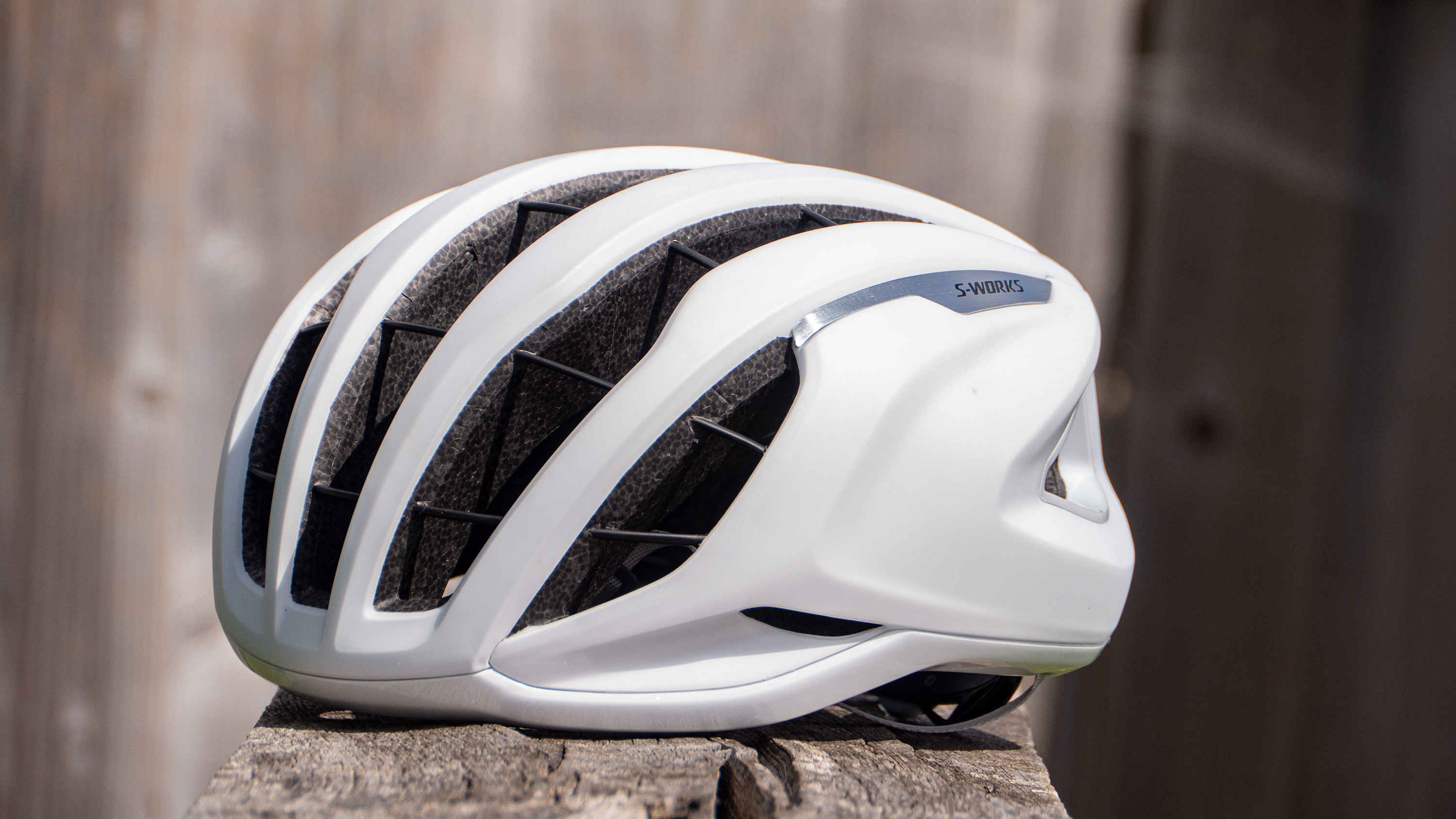
What accessories do I need for my road bike?
On the subject of accessories, there are a few extra things you might want to buy in order to improve your time with your new road bike. The first, and perhaps most important is to pair it with one of the best road bike helmets.
Once you've read our bike fit guide, you might choose to swap in a more comfortable saddle, narrower handlebars, or extra bar tape for comfort.
There's also a whole new wardrobe you can choose from, including jerseys, jackets and sunglasses, but perhaps most important of the clothing section is to ensure you choose the best cycling shorts, as these can vastly improve your comfort - although not before a correctly fitting saddle.
If you start to take things seriously, you might want to swap in some clipless pedals, which affix your feet to the pedals using cleats, which will fit to any of the best cycling shoes.
You might also want to add a cycling computer to the mix, allowing you to record your ride data without burning through your phone's battery.
Of course, you can go down a very deep and expensive rabbit hole with accessories, adding everything from new tyres to titanium bottle cage bolts. Our recommendation is to focus on safety and comfort, and only when you've got those dialled should you worry about trying to make things faster and lighter.
How to make the most of your road bike
When you've chosen your road bike and added your accessories, the next step is to actually use it all. That much is obvious, but what's not quite so clear is exactly how.
Sure, kitting up and getting out for a ride is the easy bit, but where do you go? What if you want to ride with other people, and what if you get a competitive urge? This next section will help you transition through this early phase of confusion and take your cycling journey exactly where you want to.
Join a club
One of the first things we recommend for new cyclists is to join a local cycling club. That's not to say you should join the first one you see, as in cities and towns especially there will likely be more than one nearby. Some will be more focused on long-distance riding and racing, others on developing youth involvement, while others exist to promote diversity and inclusivity. Use Google and social media to search out clubs in your area, find one that matches you as a person and reach out. One thing that's true of all cycling clubs is that they are happy to welcome new members.
Conversations with clubmates are a great way to learn. They will often be home to experts on local routes, events to join, coffee shops in the area and any kit recommendations you might need.
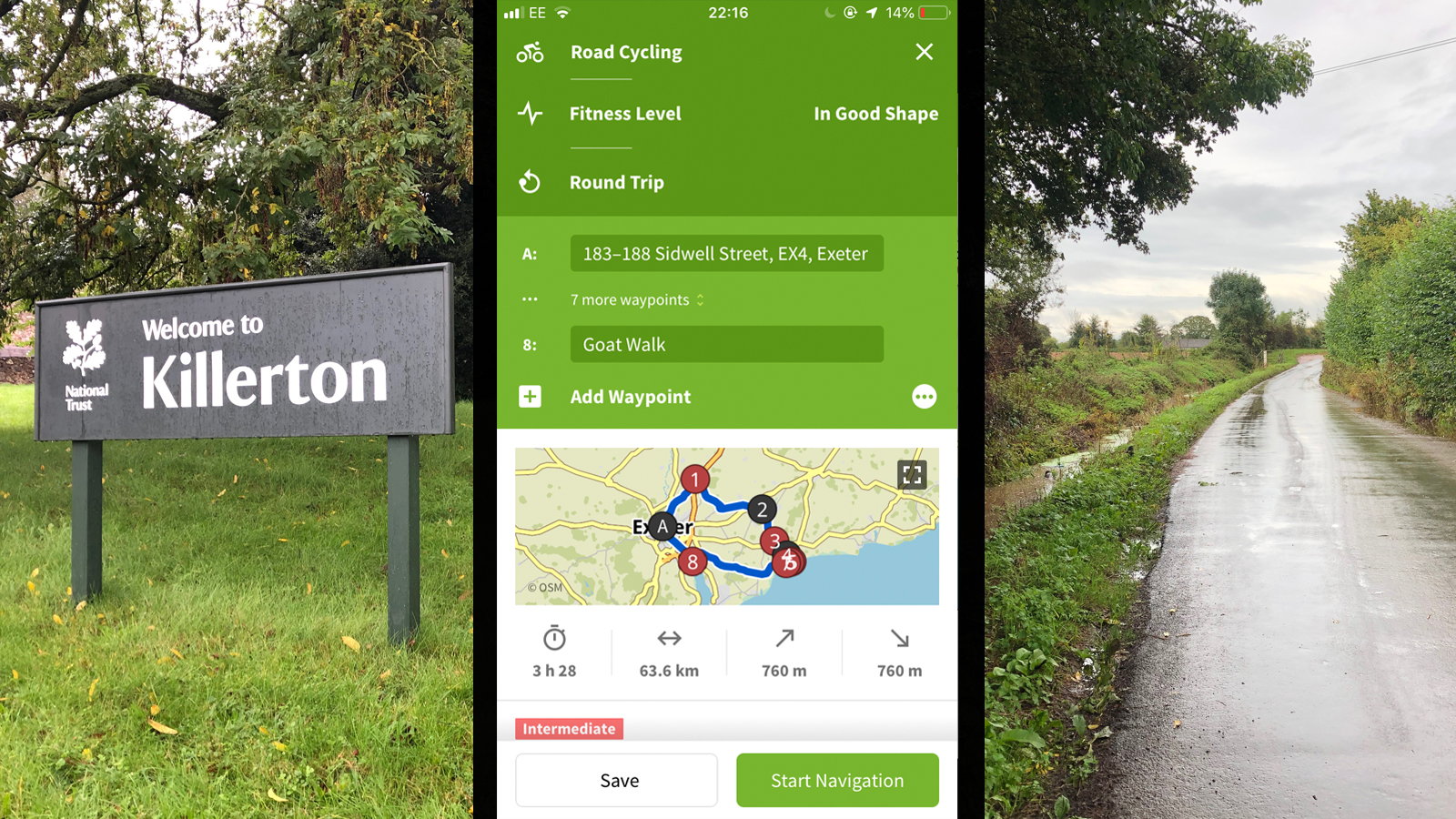
Make routes
For many, making the route is as much fun as riding it, and with the help of apps such as Strava, Komoot, OS Maps and a bit of Google Street View, you can piece together routes as near or far from home as you wish.
Join an event
For many, there's no better motivator than an upcoming event to prepare for, and there are so many options in this regard. The best way to find and enter upcoming events depends on the type of event in question.
- Sportives/Fondos: If you want to challenge yourself over long distances, then a sportive (also known as a fondo) could be perfect for you. These usually come with a choice of routes of varying distance including shorter loops, and some are predominantly on road, while others are geared more towards gravel riding. They are usually promoted online via their own dedicated websites or via event-ticketing websites, and there are no barriers to entry besides the entry fee. However, they can be quick to sell out so if you've got your eye on one, act fast to get your entry in.
- Time trials: If you want to compare yourself to yourself as well as others, then time trials are a great option for frequent attempts at chasing personal bests. Time trials are usually run by local clubs, and details of which are often promoted on the club's own website and social media pages. Entry is usually cheap and paid on the start line, but they might be exclusive to members of the club in question, so it's worth asking in advance.
- Races: If you have a competitive streak, you might want to get stuck into criterium and road racing. In almost all countries, races of this sort will require the rider to have obtained a racing license from the sport's national governing body, such as British Cycling or USA Cycling. It is also via these governing bodies' websites that you'll find and enter the races.
Set yourself a goal
You don't need an event with a deadline though. Goal setting is another great way to motivate and enjoy the experience of cycling, especially in the winter months when the weather might not play nicely. One of my favourite motivational sayings is 'motivation rises and falls, but determination remains constant', and it's with a clear goal in mind that determination is allowed to thrive.
No matter how big or small, or how it compares to the next person's, whether it's a goal to get to the top of your local hill without stopping, ride all the way to work, or breaking a world record. If it helps you ride more and enjoy it, then it's a good thing, so take a moment to think about what you'd like to achieve on your bike this year.
Get The Leadout Newsletter
The latest race content, interviews, features, reviews and expert buying guides, direct to your inbox!

Josh is Associate Editor of Cyclingnews – leading our content on the best bikes, kit and the latest breaking tech stories from the pro peloton. He has been with us since the summer of 2019 and throughout that time he's covered everything from buyer's guides and deals to the latest tech news and reviews.
On the bike, Josh has been riding and racing for over 15 years. He started out racing cross country in his teens back when 26-inch wheels and triple chainsets were still mainstream, but he found favour in road racing in his early 20s, racing at a local and national level for Somerset-based Team Tor 2000. These days he rides indoors for convenience and fitness, and outdoors for fun on road, gravel, 'cross and cross-country bikes, the latter usually with his two dogs in tow.